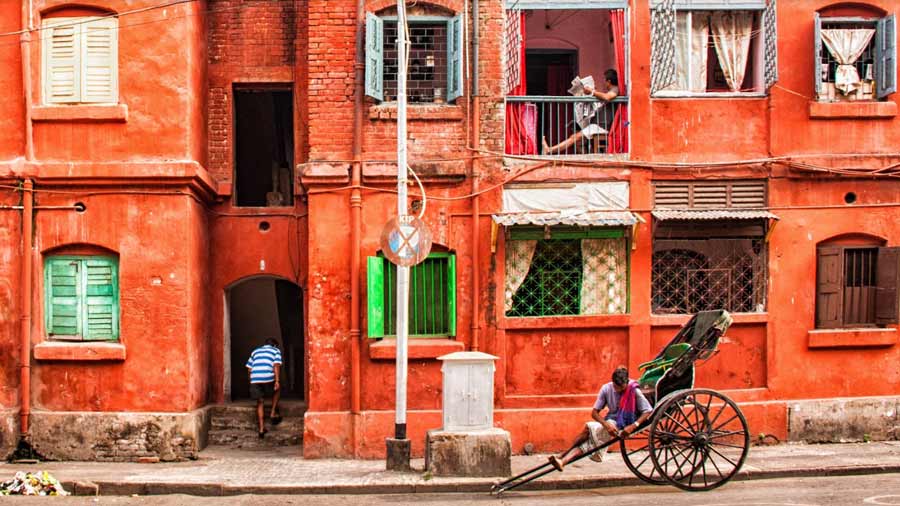The winter morning chill is still mild when I meet 49-year-old Manjit Singh Hoonjan, the head honcho and funny guide of Calcutta Photo Tours. I’ve taken an hour-long Uber ride at 6.30am to make this meeting so we can spend the next few hours jaunting through the gullies of Central Kolkata, which Manjit calls his backyard.
The internationally published photographer and third-generation Kolkatan has been taking people on walks around old Kolkata neighbourhoods for over a decade now, so they can discover and rediscover the magic he sees. “You don’t need a passport to travel. Tourism can begin in your own backyard,” he says and that’s the mantra with which he’s nurtured his company as well.
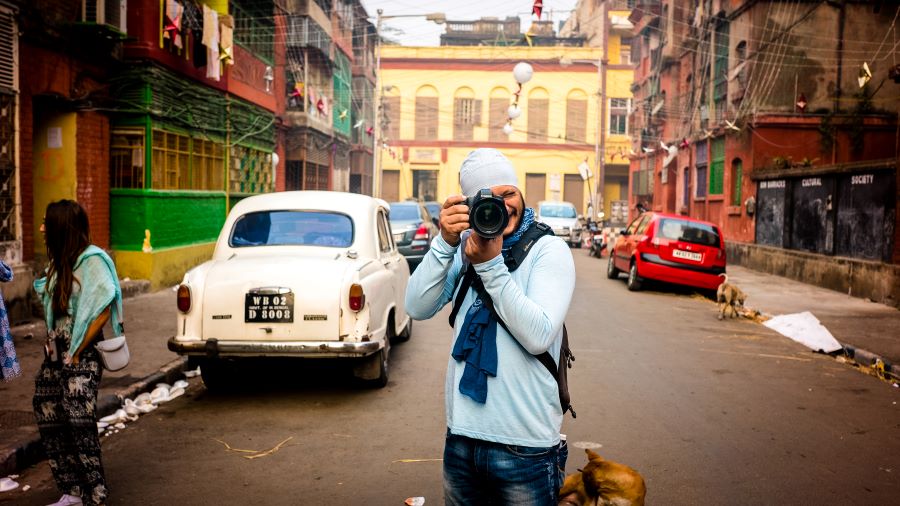
Manjit Singh Hoonjan identifies himself as a ‘13-anna Bangali’ and has been leading tours around old Kolkata for over a decade Calcutta Photo Tours
It was my Dadu who first told me stories from the history of Kolkata, when I came to the city during winter breaks. Would Dadu understand the idea of walking around the neighbourhoods close to his office para? Perhaps not, but he would be as interested as I am in the stories.
We begin with one of the area’s most eclectic neighbourhoods — Bow Barracks. The World War I-era neighbourhood has been home to the city’s Anglo-Indian community since it’s making. When the English troops, for whom the barracks were built, decided to remain in Fort William, the brick-red buildings were opened for housing to the community. The block’s history might be known to many, but with Manjit I discovered it’s many quirks — separate bathroom quarters, cheerful old uncles who greet the local boy and share notes on breakfast of halwa-puri, and a century-old Budhhist history.
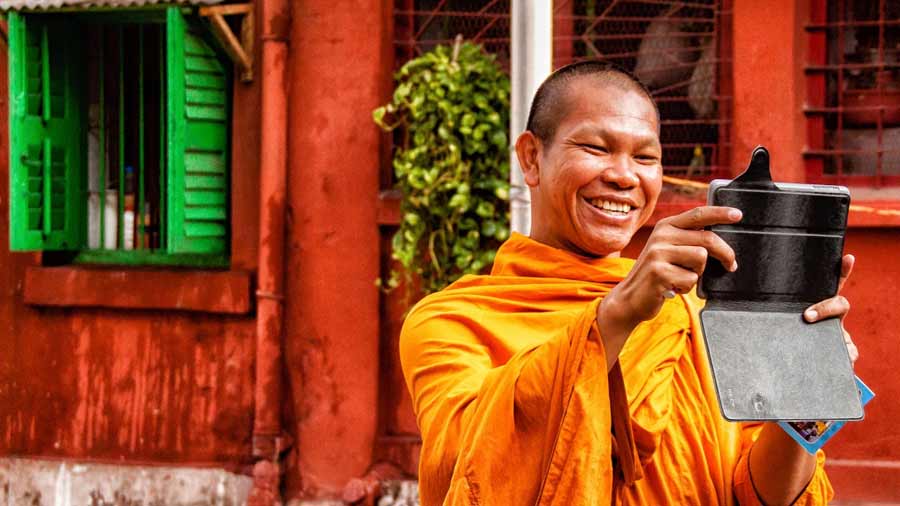
Kolkata has a Budhhist history that goes back over a century Calcutta Photo Tours
“There are things we’ve all learnt in history books but we don’t really stop and think about it, or understand the impact,” Manjit says about Kolkata’s 125-year-old Budhhist history. “India [under Asoka] was a Budhhist country for a very long time.”
It is these microcosms that are perhaps the most fascinating parts of these ‘Calcutta’ neighbourhoods. Each turn brings you to a lane with a distinctly different personality. Standing in their verandahs, aunties collect vegetables from street vendors using the ingenious home invention of the bag-at-the-end-of-a-rope. Around the curb, there’s a bustling lane with honks, sizzles and chatter of an early morning crowd and eateries. At the next turn, we’re in a narrow lane buying uniquely delicious sand-roasted peanuts from a vendor who has known Manjit since childhood, and looking at the facing gates of a Parsi agyari and an Aga Khani mosque.
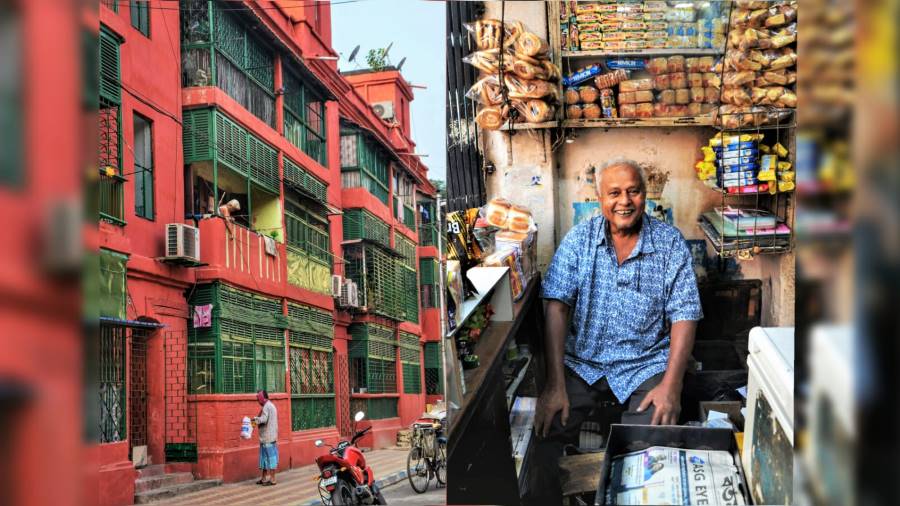
Morning walking tours bring unique scenes such as (left) old aunties collecting groceries in ingenious ways and (right) uncles greeting you with smiles and cake at their bakeries Rumela Basu
Jewish synagogues, Parsi agyaris, Chinese temples and Aga Khani mosques, along with many tiny Hindu shrines, all find a nook in these lanes with names like Ezra Street and B.B. Ganguly Street. “This, for want of a better word, is the Grey Town,” explains Manjit. With the Raj establishing its White Town around Dalhousie Square and the locals in their “Black Town”, the many immigrant communities who found their way to yesteryear Calcutta and modern Kolkata found a place here. The traders and travellers wanted to be close to the action at Dalhousie, but were not British enough, so they built themselves here. Subsequently, people came and settled in the jewellers’ neighbourhood, carpenters’ neighbourhood and opticians’ neighbourhood along the stretch.

The Magen David Synagogue was made in 1884 by Elias David Ezra, after whom Ezra Street is named Calcutta Photo Tours
Manjit’s grandfather, the first generation to make a home here, was a carpenter and that’s the area where the family still lives. This is the ‘Calcutta’ that he takes pride in as well, the one he wants to show off. His travels abroad have taught him that every city has the good and the bad, but it’s when you take pride in your city, you see the hidden stories unravel and the magic in the mundane.
“I once had an American visitor tell me, ‘This is NYC on crack.’ I couldn't agree more. I remember looking for photos of Calcutta and finding only grim images of poverty, and that’s the narrative I wanted to change. This city has given me so much and I take pride in all of it.”

Manjit’s Market walks are targeted towards photographers for the numerous photo-ops they provide Calcutta Photo Tours
The magic of the morning is also wafting through the air in the form of delicious scents from the mishmash of eateries. You could create a well-crafted mosaic with the plates of food you’d find in this stretch around Tiretta Bazaar (or Poddar Court) and Bow Barracks. Portuguese, British and Jewish influences are seen in the breads and sweet treats of hole-in-the-wall bakeries, and the North Indian communities brought flavourful dalpuris. None is more famous than the Chinese breakfast of the city’s first Chinatown. By the time we reach that lane still nibbling on fruitcake, the food stalls are gone and the vegetable market has settled in.
The disappointment of missing out on the baos, dumplings and fish-ball soup is made up by a visit to the little Chinese temple or church, as the signboard says, tucked away in an adjoining lane.
“Hindu shrines were temples, Muslim places mosques, and everything else was registered as a church by the British. So there are Chinese and Parsi churches dotting the old city,” says Manjit. His face seems to light up when I mention how I never knew this place existed hidden behind the chaos of the main road, as if he’s accomplished some unknown goal.
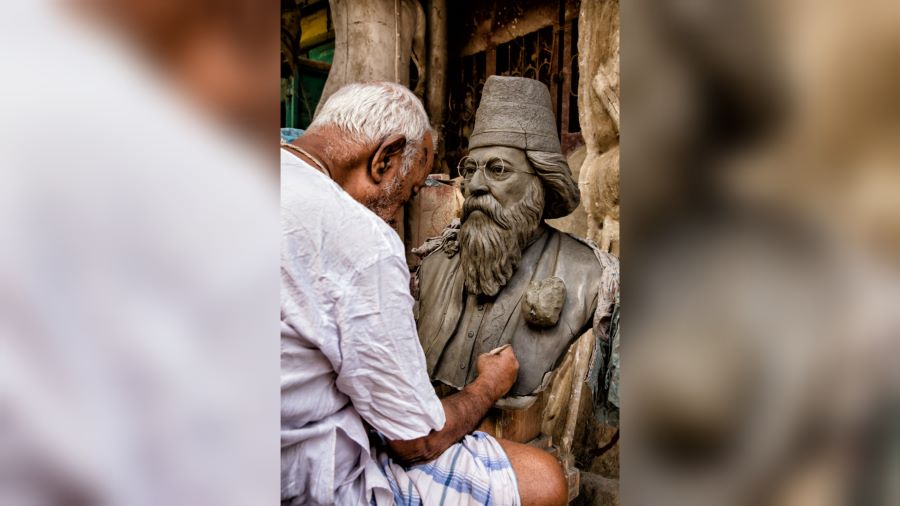
Kolkata’s Kumartuli has many wonders apart from the puja idols it is known for Calcutta Photo Tours
“I am most excited when Indians, especially Kolkatans, sign up for the tour. I try extra hard to make them rediscover their city. For example, have you been to Kumartuli outside of any pujo time? They make some fascinating things all year round,” he gushes.
It’s only in recent years that the enthusiasm for such walks has grown amongst the home crowd. As Kolkata has evolved from a transit point to a more touristy place and as a newer kind of Indian traveller has learnt to see a newer way of exploring, people have shown more interest in his tours.
“It’s not just about the stories and the history. When on these walks, I want people to feel like they’re touring with someone who is part of the community, who’s a friend.” Being a photographer, and being the boy next door, literally, means that there’s someone willing to stop for a chat or calling out a greeting. It also means that as a fellow Kolkatan, you look for the things that give new meaning to the tales of your own city.
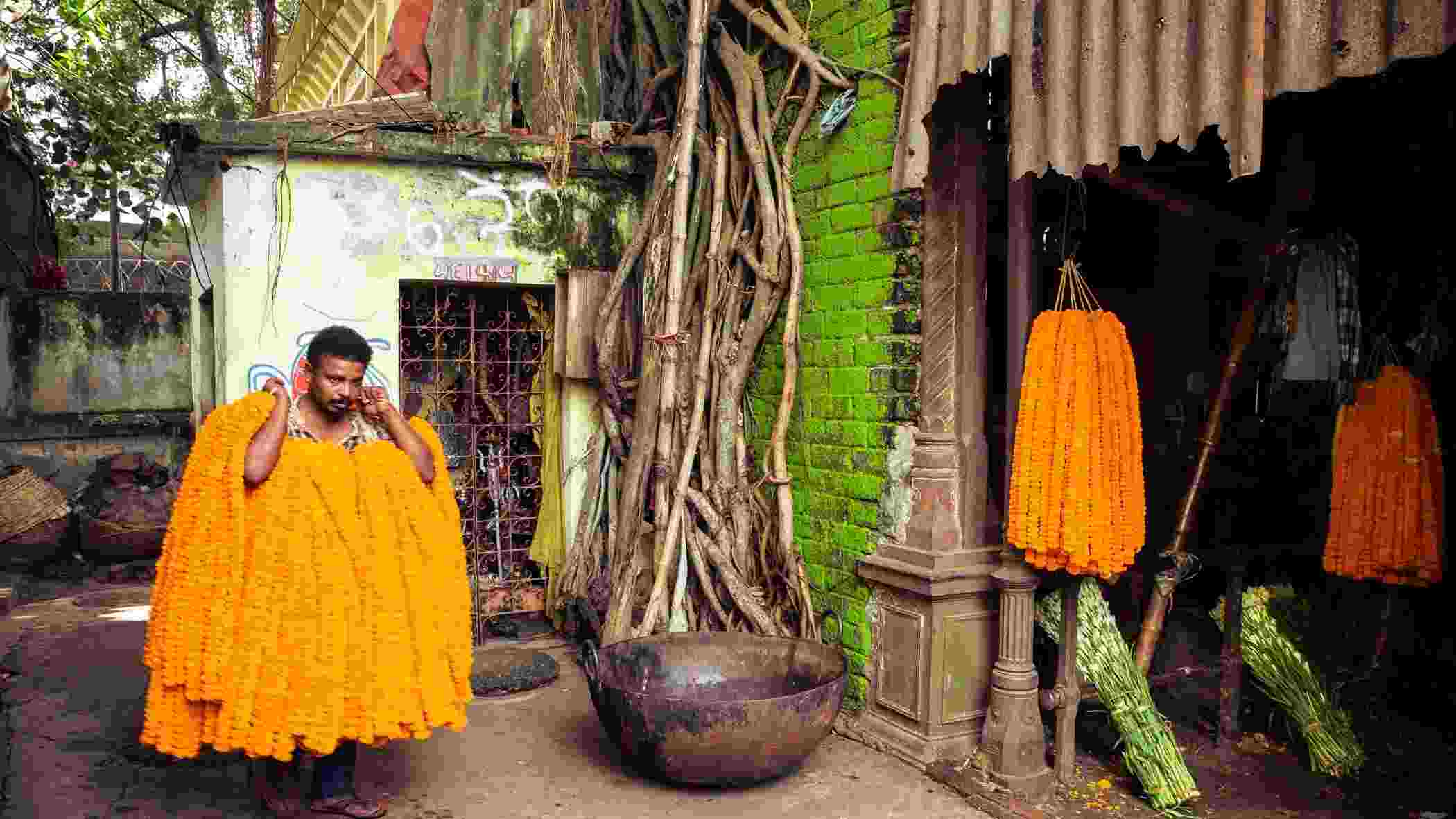
Scenes at Hooghly’s flower market make for many a great frame Calcutta Photo Tours
And there’s many a tale to tell in this city. Calcutta Photo Tours’s walks span many topics. Some centre around Kolkata’s European and multicultural history, some explore the lesser-known sides of well-known spots and others such as the market walks are a photographer’s delight.
Manjit calls himself a “13-anna Bangali” because he cannot read Tagore’s works in Bengali, which is one of the annas subtracted from this Bengali-ness, apart from his Punjabi name and his turban. His biggest inspiration for both his photography and art, however, are lines from the poet’s Ekti Shishir Bindu. I, for one, am glad that I went those few steps from my home and found this wealth of stories in my dew drop of a morning.
“If you have connected a city’s story and history to people, you’ve started a love story. Then they have an affection for the city and that’s the goal, isn’t it?”
